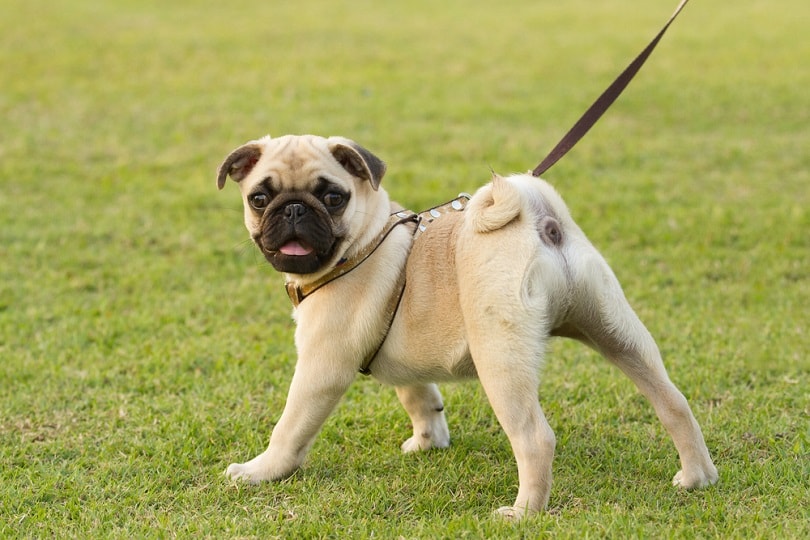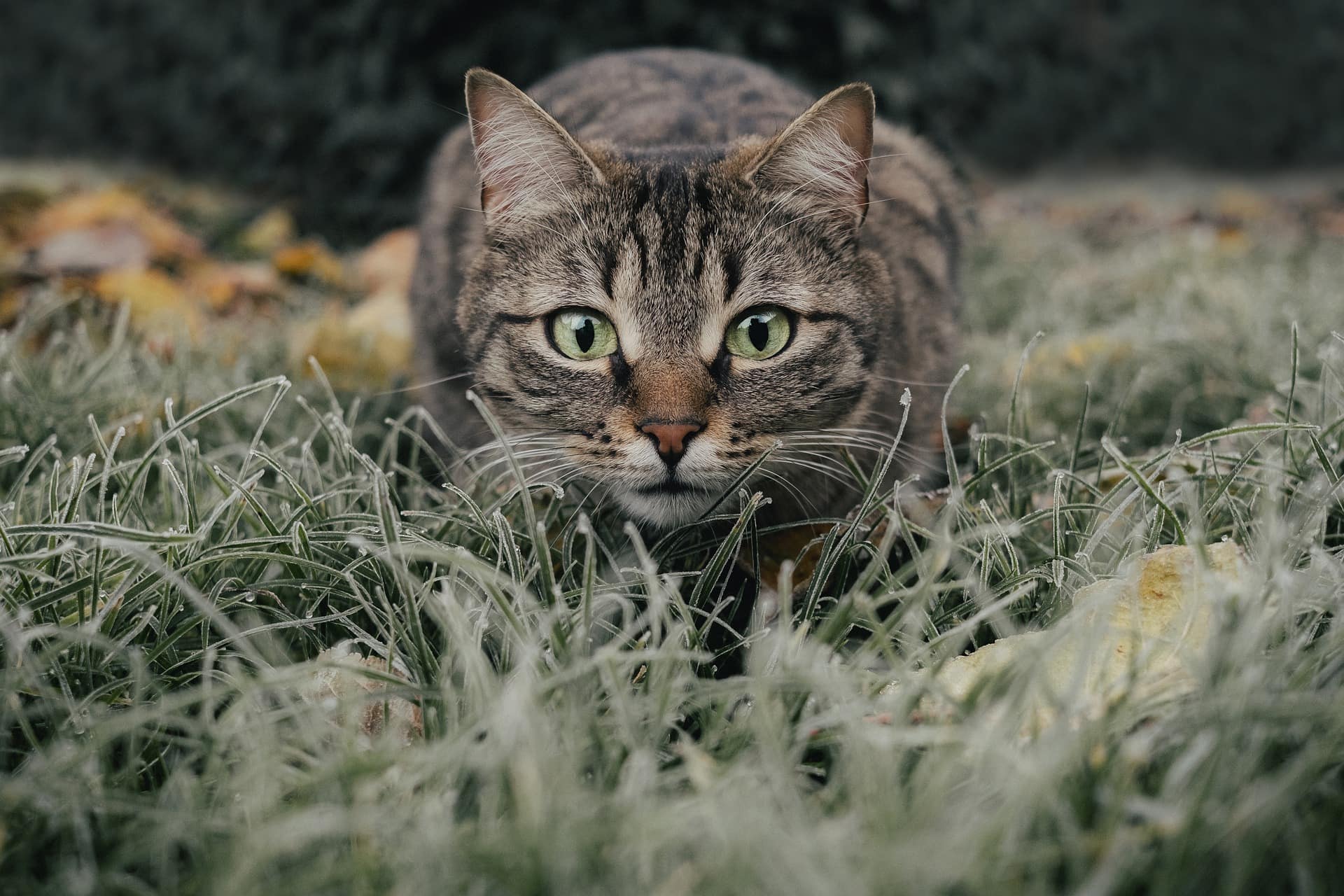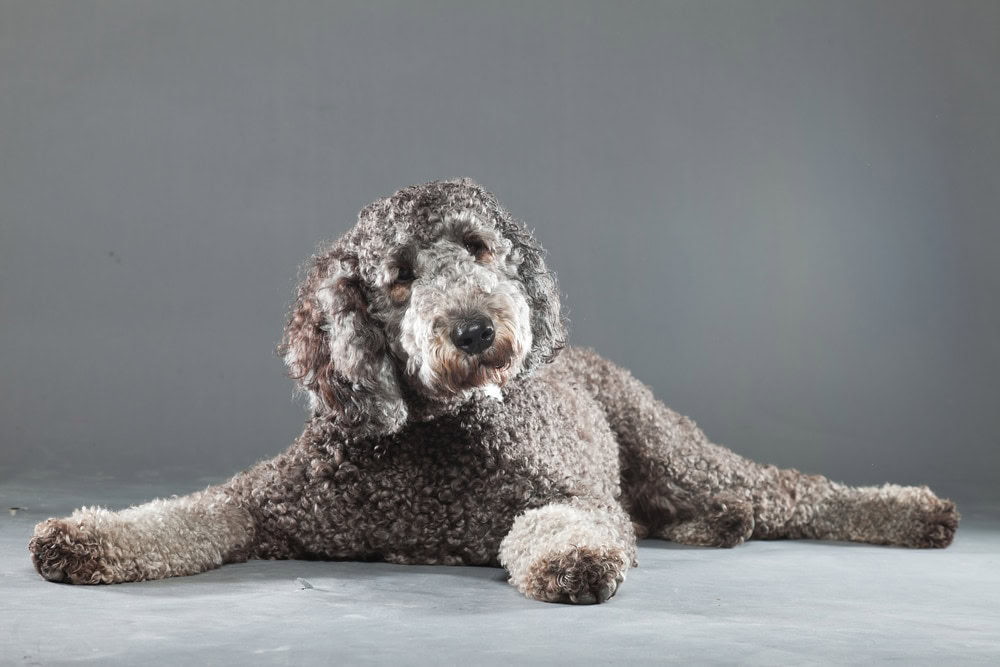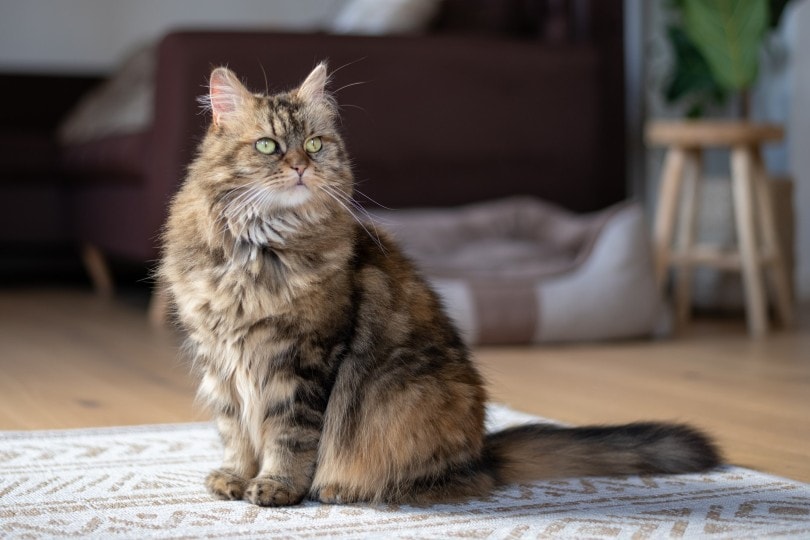Click Below to Skip Ahead
Pugs have existed for thousands of years. They originated in ancient China and eventually spread throughout the world. They have become one of the most popular dog breeds in the US, and they make excellent pets who never fail to amuse their owners!
Breed Overview
Height:
10–13 inches
Weight:
14–18 pounds
Lifespan:
13–15 years
Colors:
Fawn, black
Suitable for:
Apartment dwellers, families with children, multi-dog homes
Temperament:
Playful, friendly, determined, companion
Pugs are natural-born entertainers who don’t shy away from the spotlight. They love bringing joy and laughter to people and can be excellent companion dogs. However, these delightful dogs have specific needs and are better suited for more experienced dog owners.
Since Pugs require specialized attention, it’s vital to become well-acquainted with their care requirements to determine if you have the time and resources to care for one. Our guide below provides a comprehensive look at the Pug to help you decide if they are the ideal pet for your home.
Pug Characteristics

Pug Puppies
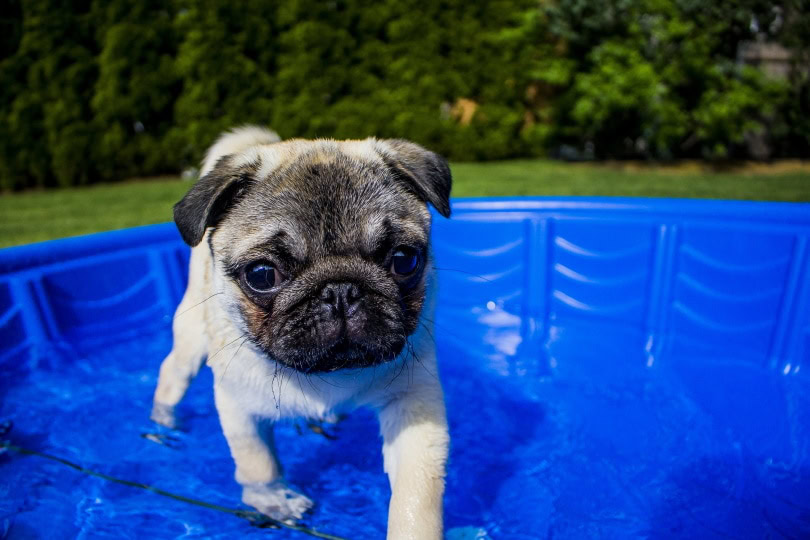
Since Pugs are purebred dogs with historical lineages, show-quality puppies from champion lines are expensive. If you’re not a breeder looking to raise a champion show dog or do selective breeding, there’s no need to bring home an expensive Pug puppy. Many healthy Pugs are available as companion dogs.
Pugs, in particular, can have several significant health issues, and poor breeding practices can significantly put their health at risk. Therefore, before you buy a Pug puppy, make sure to do thorough research on breeders.
If you choose to adopt a Pug from a shelter, take time to prepare yourself for health concerns. Adoptions are excellent and necessary, but Pugs in shelters may not have health history records available, and medical costs can rack up quickly. Therefore, ensure you’re well-prepared for additional costs that may come with adopting a Pug before bringing one home.

Temperament & Intelligence of the Pug
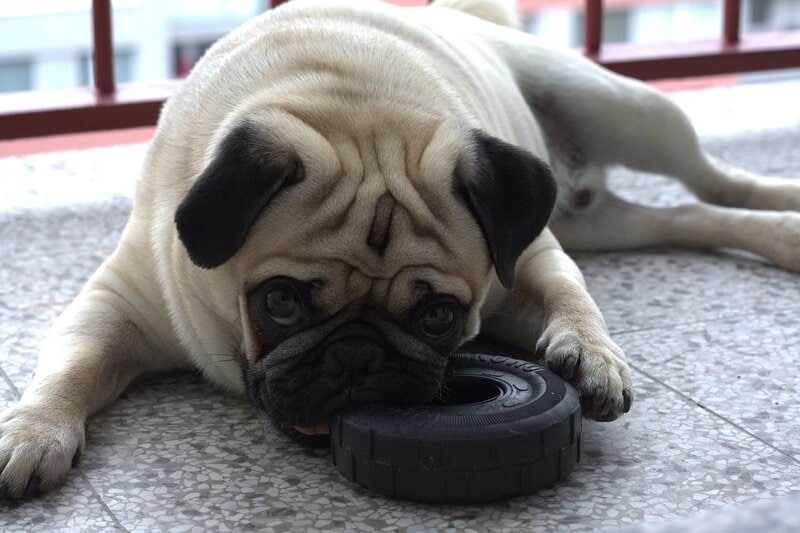
Pugs are dogs with prominent personalities packed in small bodies. They’re very friendly, love human companionship, and aren’t afraid of the spotlight. In fact, they love receiving praise and attention.
Pugs can be a little stubborn, especially when it comes to potty training. However, these intelligent and observant dogs can become easier to train as their bond with their owners strengthens.
Are These Dogs Good for Families? 👪
Pugs make excellent family dogs. Their small size makes them unintimidating for young children, and they’re not known to engage in roughhousing. Since Pugs were bred as lap dogs, they enjoy human companionship and don’t require a lot of exercise. Therefore, they tend to have short bursts of energy.
Although they don’t need to be the center of all the action, they love to be around people. Pugs don’t do well being home alone for long periods, so they’ll do best in households where people are frequently at home.
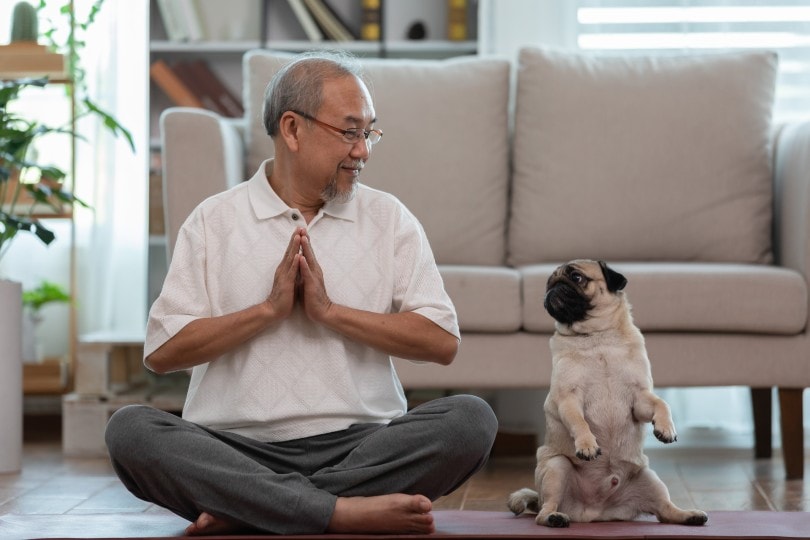
Does This Breed Get Along with Other Pets?
Pugs have easy-going natures and typically do well living with other dogs. Since they are low-energy dogs, some Pugs may have difficulty living with high-energy dogs and puppies that don’t respect their boundaries. If there’s a high-energy dog in the home, introduce them carefully so that the Pug doesn’t feel overwhelmed.
When introduced correctly, Pugs have a high chance of success at living harmoniously with other pets. They don’t have a strong prey drive and can become friends with cats. All dogs have the best chance at living with dogs and other pets with early socialization when they’re puppies.
When introducing Pugs to other animals, make sure to supervise and allow plenty of time for them to get acquainted and used to each other.

Things to Know When Owning a Pug
Although Pugs don’t have high-maintenance personalities, they have specific care needs. They’re susceptible to becoming overweight, and their cute wrinkles can cause serious concerns if owners don’t tend to them properly. Therefore, Pugs do best with experienced dog owners who have the time to provide proper care.
Food & Diet Requirements 🦴
Pugs are prone to obesity, so staying on top of their diet is crucial. Rather than free-feeding, Pugs benefit from scheduled meals. Scheduled meals can help you track your Pug’s food intake better and ensure that they’re not overeating.
You can work with your veterinarian to determine the proper meal portions for your Pug based on age and activity level.
It can also be helpful to regularly weigh your Pug to determine if they’re overfed or underfed.
Atopy is also common in Pugs, so they’ll benefit from skin and coat formulas. Fortunately, since Pugs are a popular dog breed, several dog food brands have specialized formulas for them. Overall, Pugs will do well with low-calorie formulas that also promote a healthy skin and coat.
Exercise 🐕
Since Pugs were originally lap dogs, they aren’t high-energy dogs. However, they’ll still need exercise because they can easily become overweight. Pugs will do well with about 40 minutes of exercise per day. They’ll enjoy going on brisk walks, running around the yard, or visiting the dog park. Just be careful when exercising your Pug. Since they have flat faces, they can have breathing problems.
Difficulty breathing makes them susceptible to overheating because they have more trouble cooling down. Therefore, monitor them while exercising to ensure they’re not overexerting themselves. If your Pug is food motivated, you can also provide enrichment activities by having them snoop and play with treat-dispensing toys.
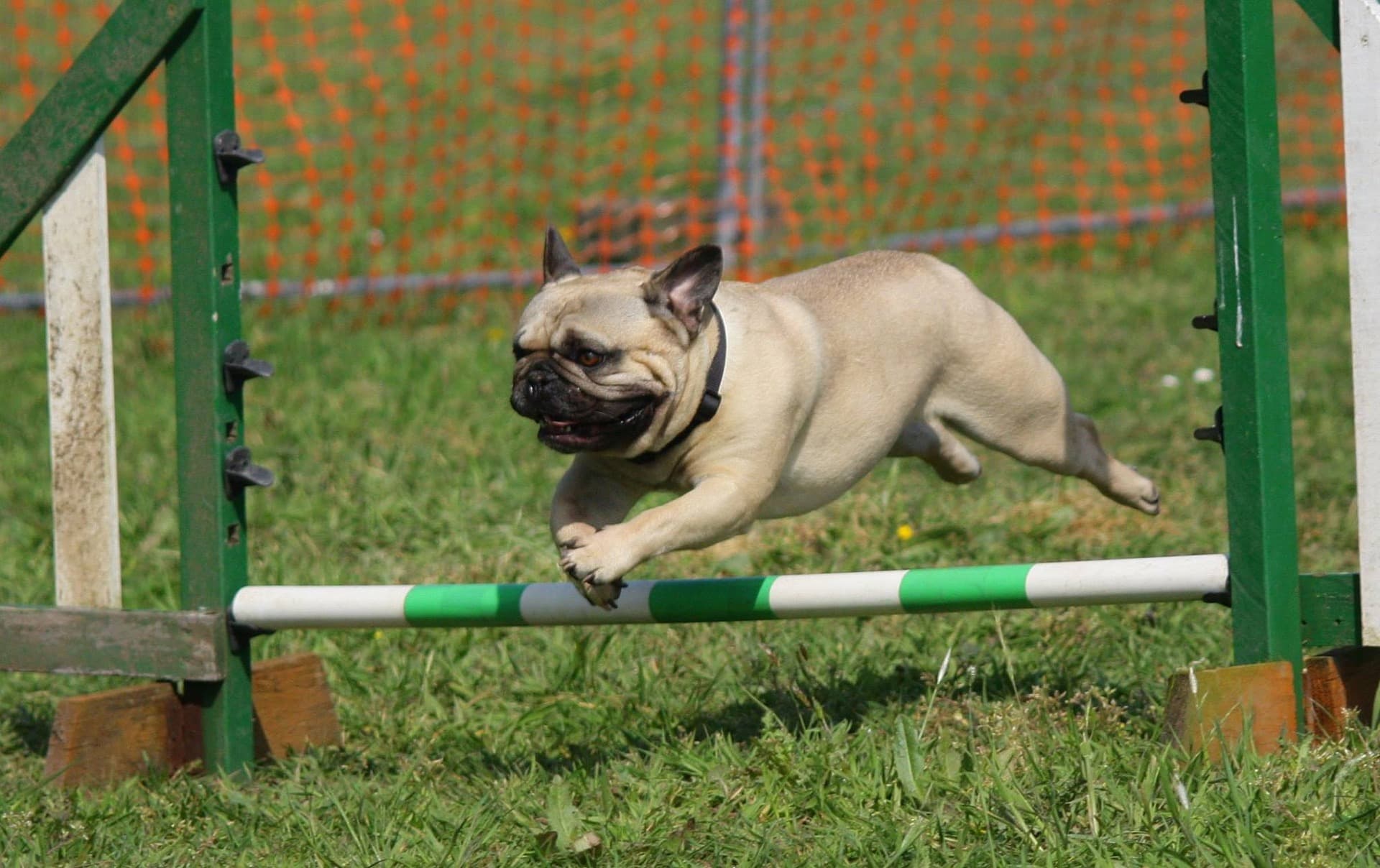
Training 🎾
Some Pugs can have a stubborn streak, and training them at first can be a little challenging. However, they usually respond well to positive reinforcement and treats. Training should be a positive and fun experience for Pugs, so keep training sessions short to prevent your Pug from getting bored or distracted.
Also, make sure to start training on day one and be consistent. These habits will help your Pug to establish a routine and be more receptive to training. In general, toy dog breeds have a difficult time with potty training because of their small bladders.
Therefore, it’s crucial to have a potty schedule established for Pug puppies. They may have to relieve themselves as frequently as every 30 minutes to an hour. While your Pug learns to become potty trained, don’t give them free rein of the whole house; otherwise, they’ll eliminate anywhere.
Closely monitor how frequently they use the bathroom to reduce the number of times they have accidents in the house.
Grooming ✂️
Pugs have particular grooming needs. They’ll need a bath every 3 weeks to wash away oil buildup on their skin. When you give them baths, use a shampoo and conditioner with a gentle formula that nourishes their sensitive skin.
Pugs require brushing every other day because they have thick, shedding coats. Often, their hair gets stuck and woven in between their coats, trapping oils and moisture. This can cause an unpleasant odor and infection. Some of the best brushes to use on Pugs are slicker brushes and de-shedding tools.
Pugs also need their wrinkles cleaned daily. Food and saliva get trapped between their wrinkles easily, and improper cleaning can lead to an unpleasant odor and skin fold dermatitis. Since Pugs have floppy ears that turn downward, they’ll also need regular ear cleanings. An ear cleanser will help their ear canals stay dry and prevent infections.
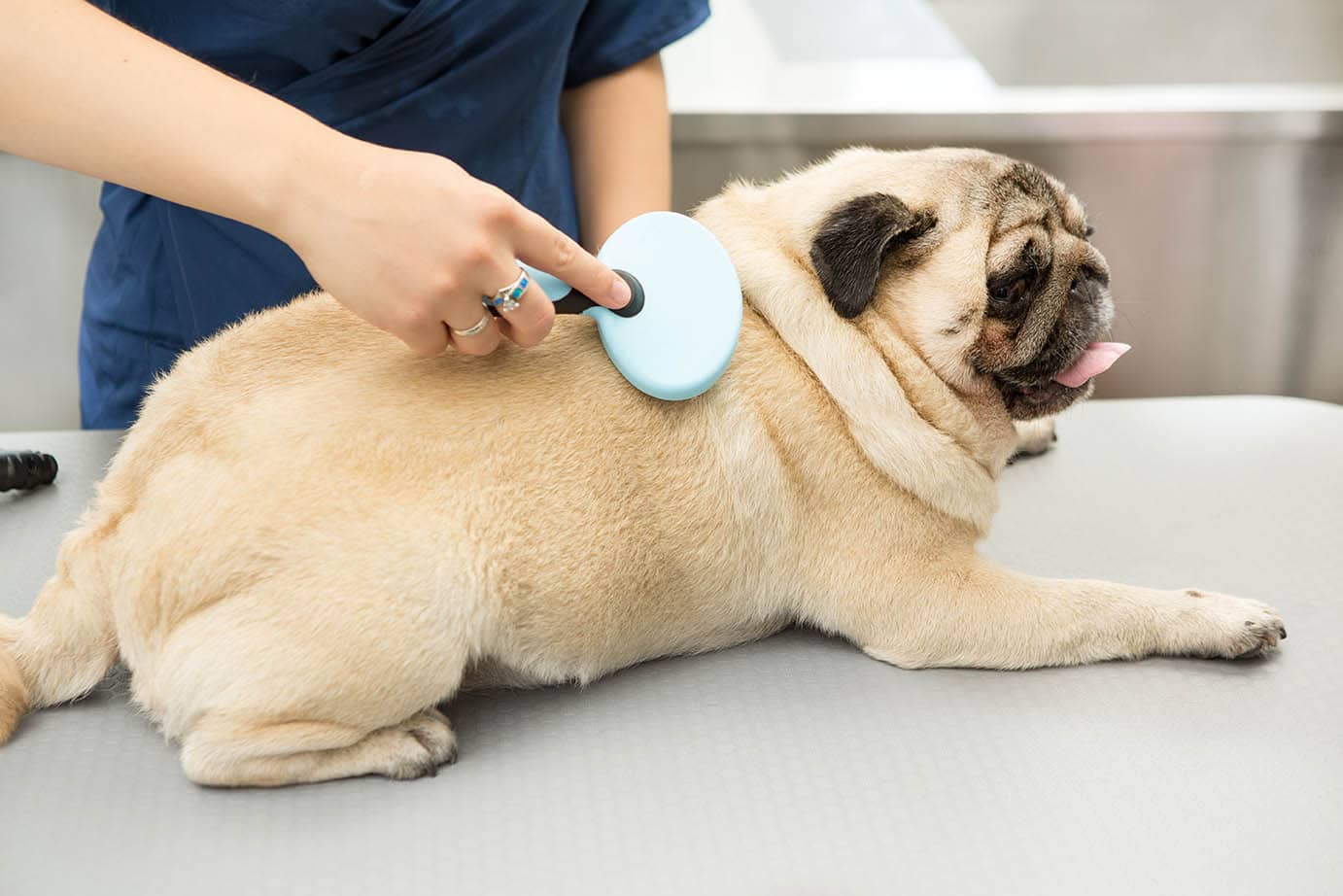
Health and Conditions 🏥
Pugs are susceptible to several significant health conditions. They’re brachycephalic dogs, which means that they have flat faces. Flat muzzles can lead to breathing issues, and their wrinkles can develop skin conditions.
Pugs have a good lifespan of 13-15 years, and they can live a long life if they meet a responsible owner who’s attentive to their care needs.
- Skin fold dermatitis
- Obesity
- Legg-Perthes disease
- Stenotic nares
- Pug Dog Encephalitis (PDE)
- Hip dysplasia

Male vs Female
Male and female Pugs don’t differ too much in physical appearance. Males tend to be a couple of inches larger than females. They also don’t have too many personality differences. Males may have a little more energy, and females may be less patient. However, they’re not stark differences.
Males who don’t get neutered may be more difficult to potty train because they tend to mark their urine more.


3 Little-Known Facts About the Pug
As one of the most ancient dog breeds, Pugs have racked up many accolades over time as man’s best friend. Here are some of our favorite facts about them.
1. Pugs Are Used to Receiving the Royal Treatment
Pugs have been around since at least 400 BC. You can trace the first Pugs to ancient China, where they made their way to becoming lap dogs for Chinese royalty. They used to have kings and queens as their personal chairs!
Another royal Pug, Pompey, thwarted an assassination attempt against the first Prince of Orange in 1572. Because of Pompey’s valiant effort, the Pug became the official dog breed for the House of Orange.
2. Breeders Bred Pugs Intentionally for Their Wrinkles
Chinese breeders put a lot of focus and attention on the Pug’s wrinkles because they have a similar formation to the Chinese character for “prince.” This feature suits Pugs well, as they’ve sat in elaborate palaces amongst royal families.
3. Pugs Aren’t Related to Bulldogs
Although they share similar wrinkles, build, and flat faces, Pugs and Bulldogs aren’t related. Instead, Pugs are more closely related to the Pekingese, another breed that originates from China.
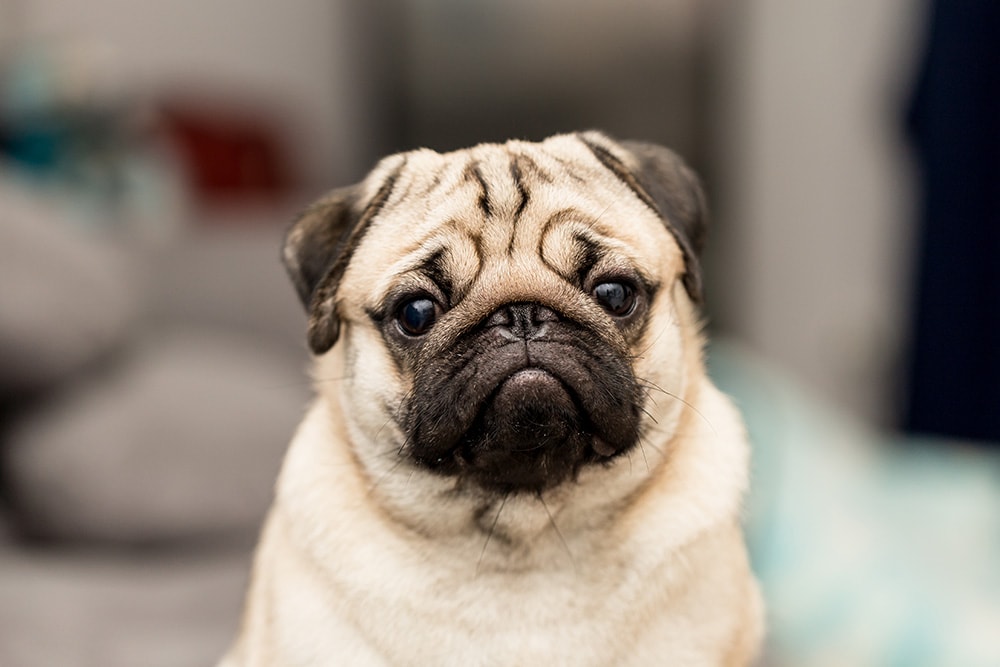

Final Thoughts
Pugs are an ancient breed that consistently captured the hearts of people throughout history. Although they may have some significant health issues and aren’t the most athletic dogs, they’ve proven to be more than formidable survivors. Pugs charmed their way through life to sit in prized seats amongst royals and celebrities.
They’re more suitable for experienced owners who can provide consistent training and are attentive to their special care needs. When you treat a Pug right, you’ll have a loving, funny, and loyal companion in your home.
Featured Image Credit: Praisaeng, Shutterstock
